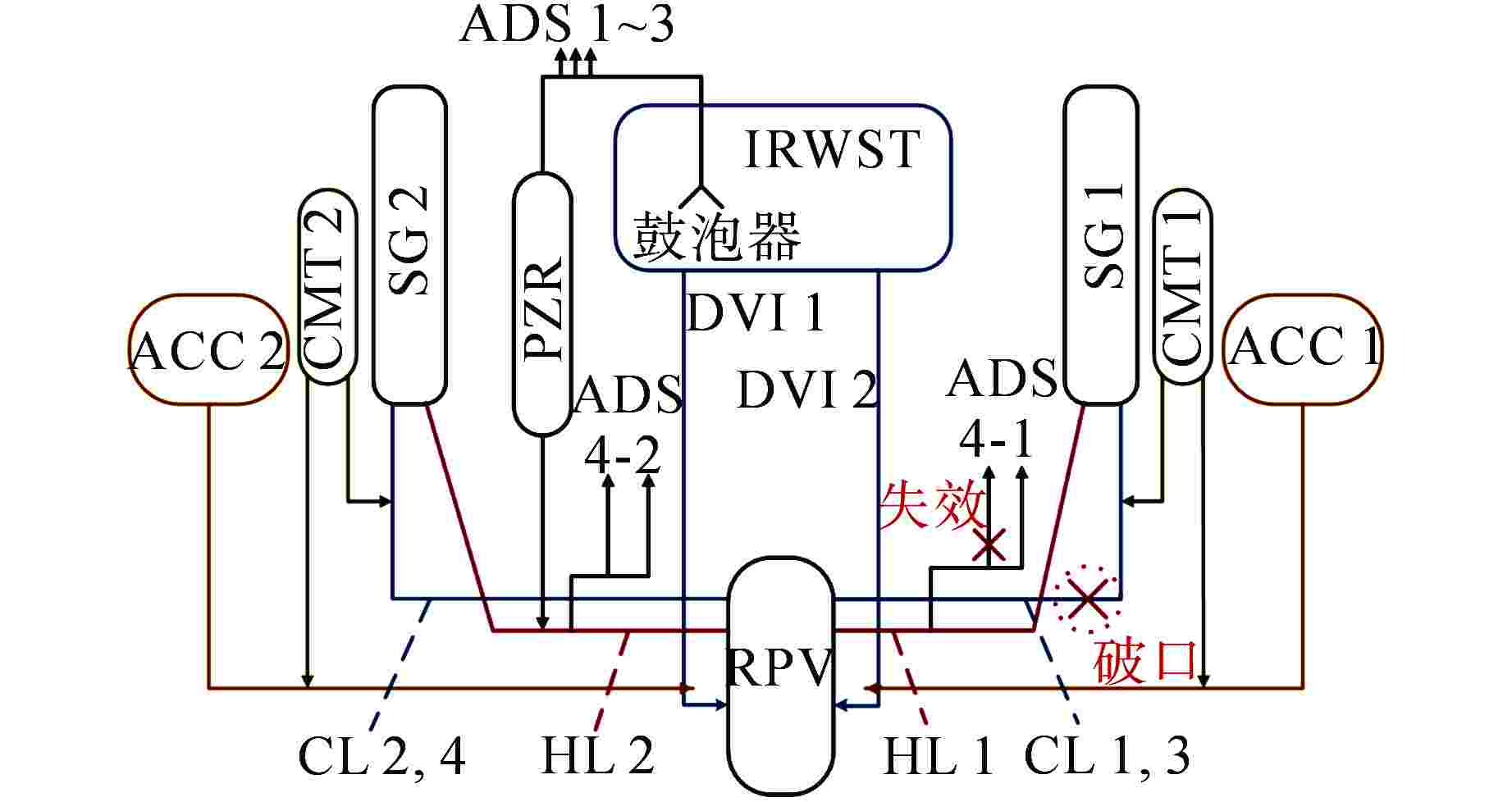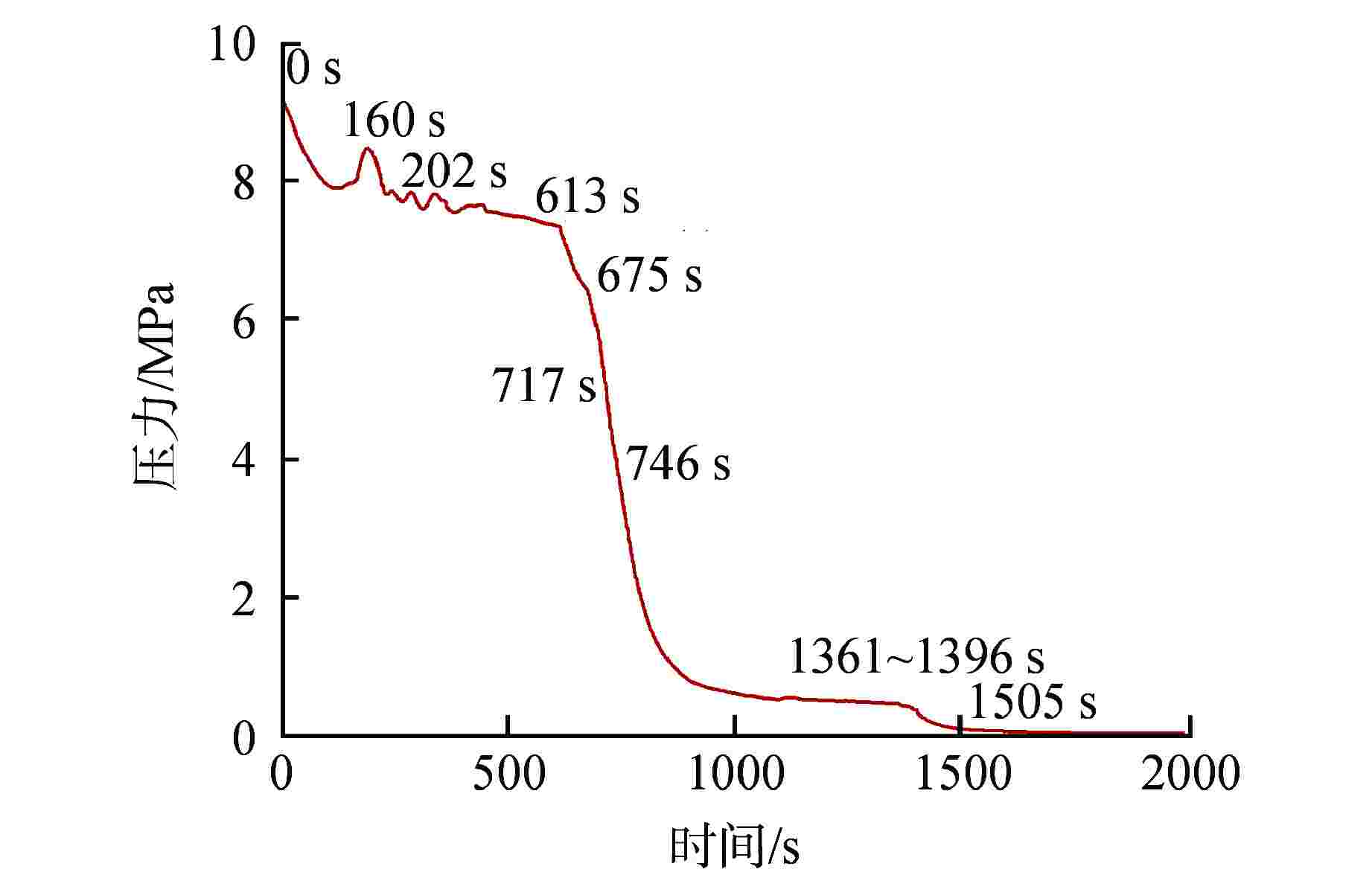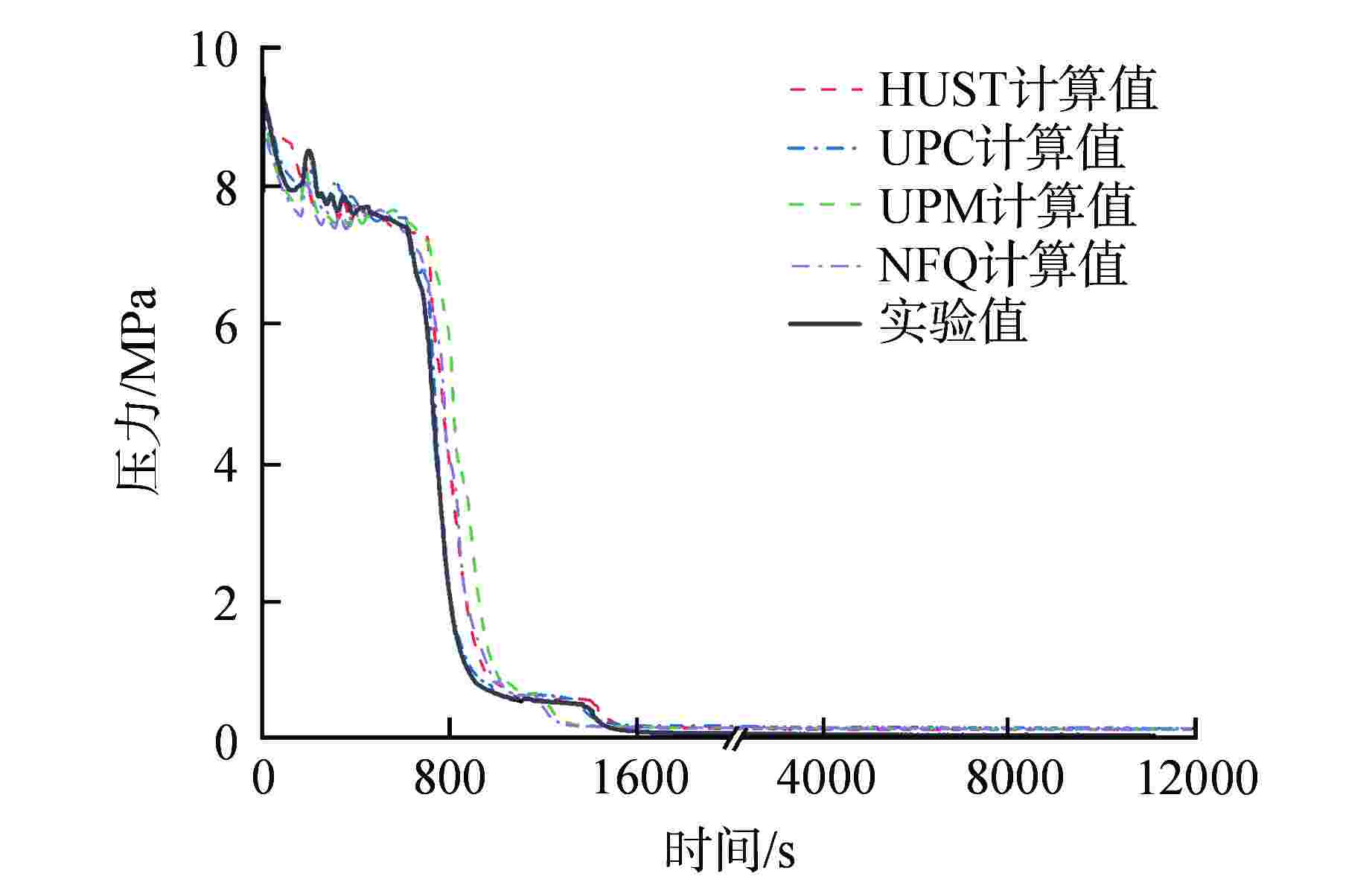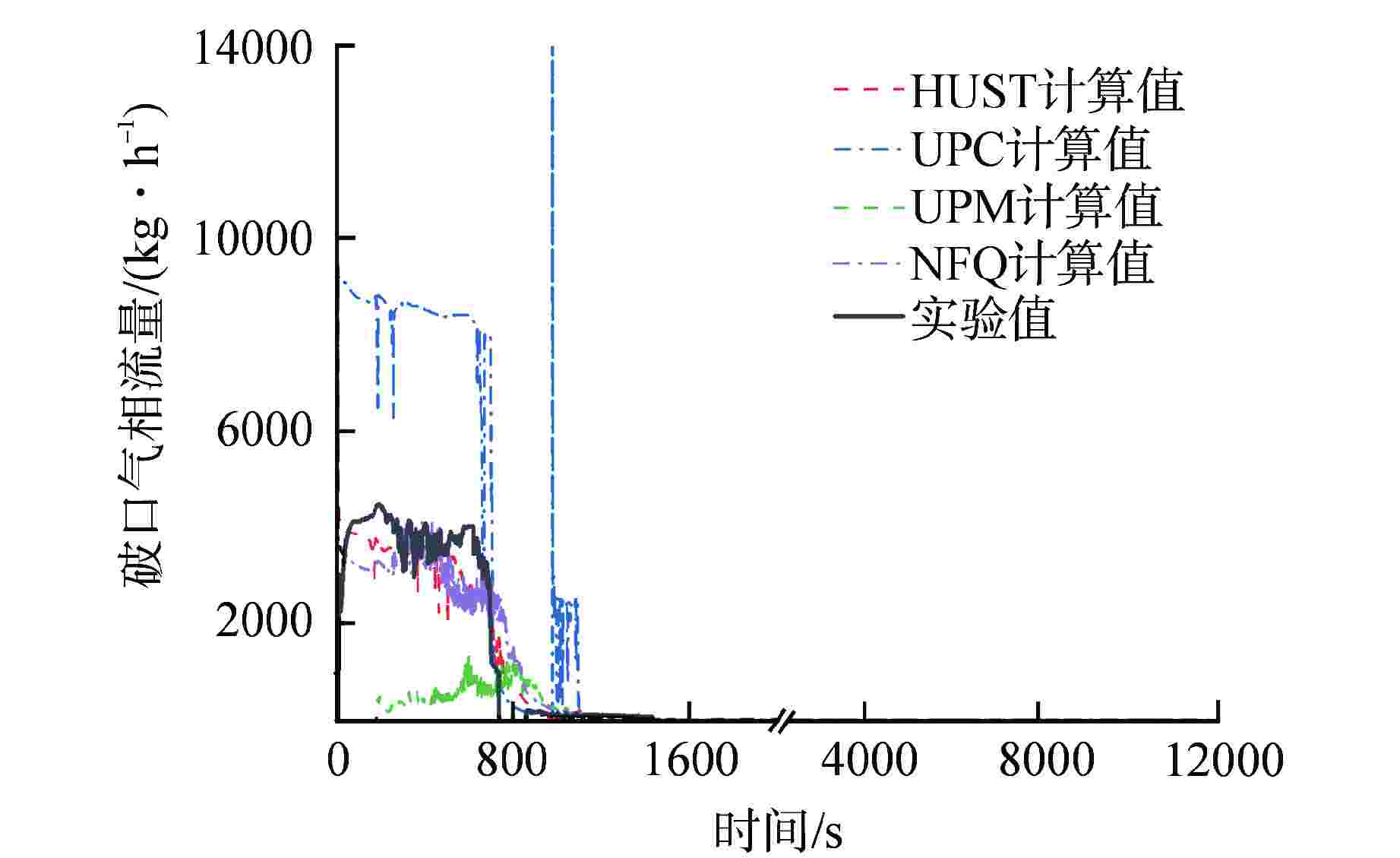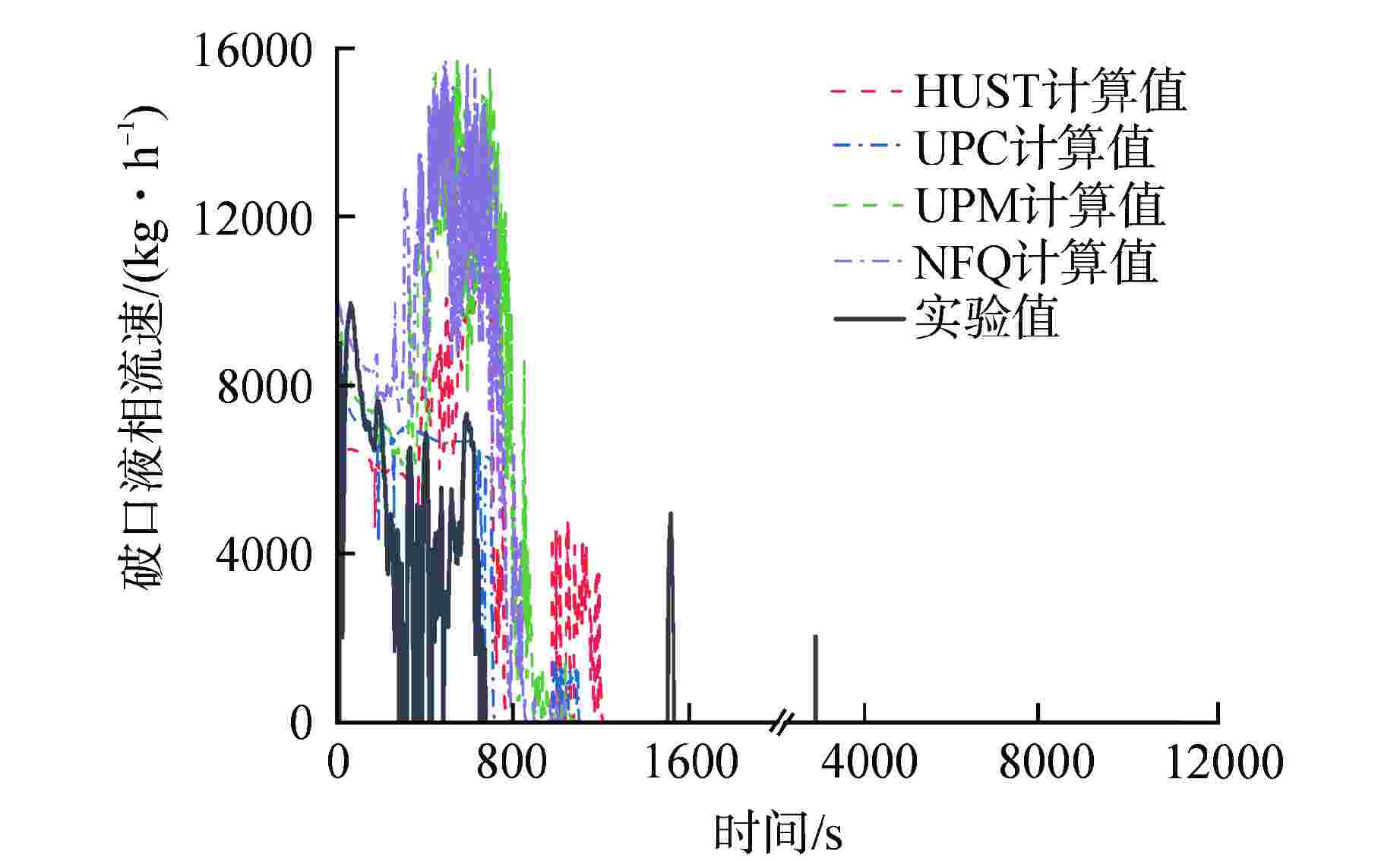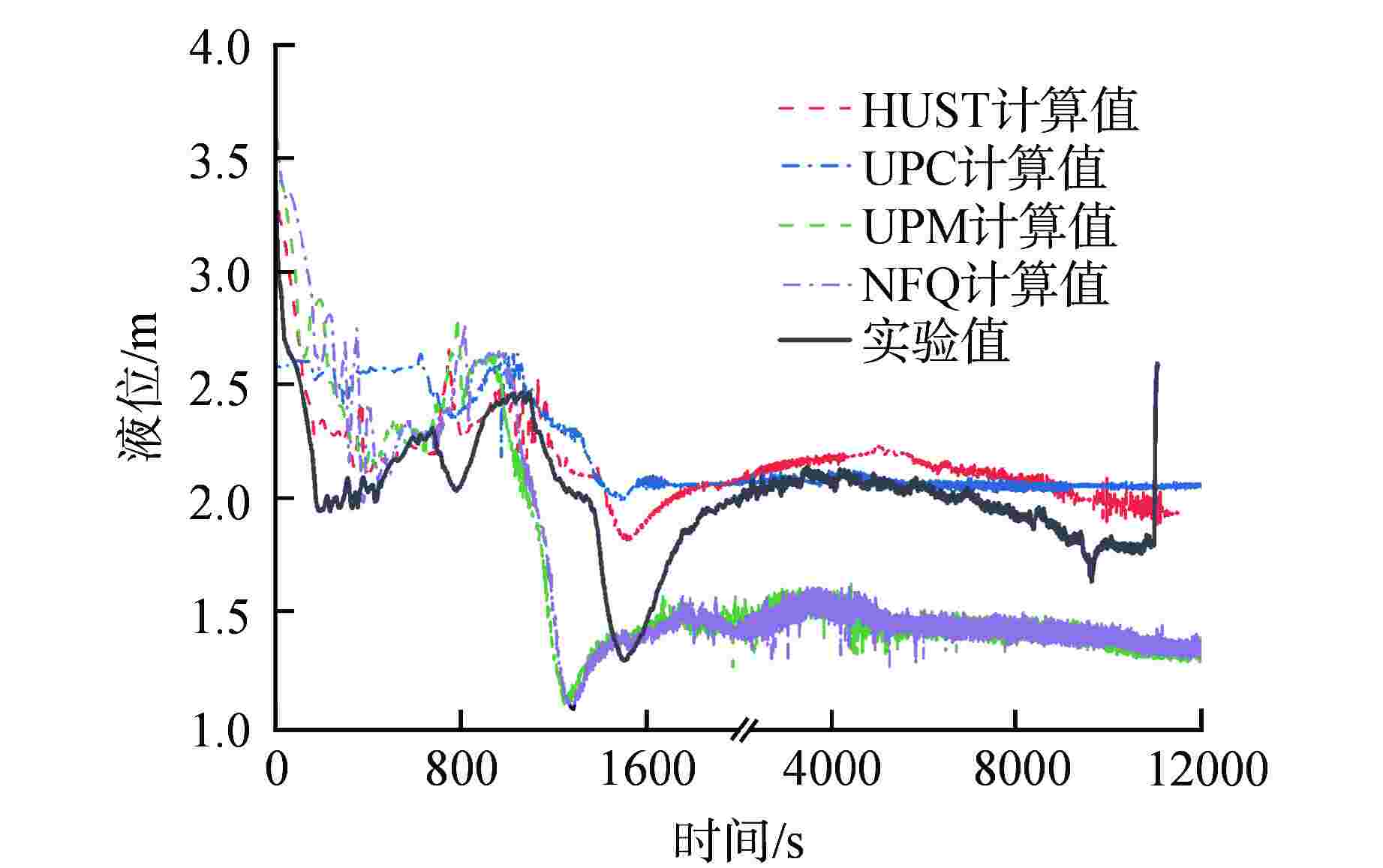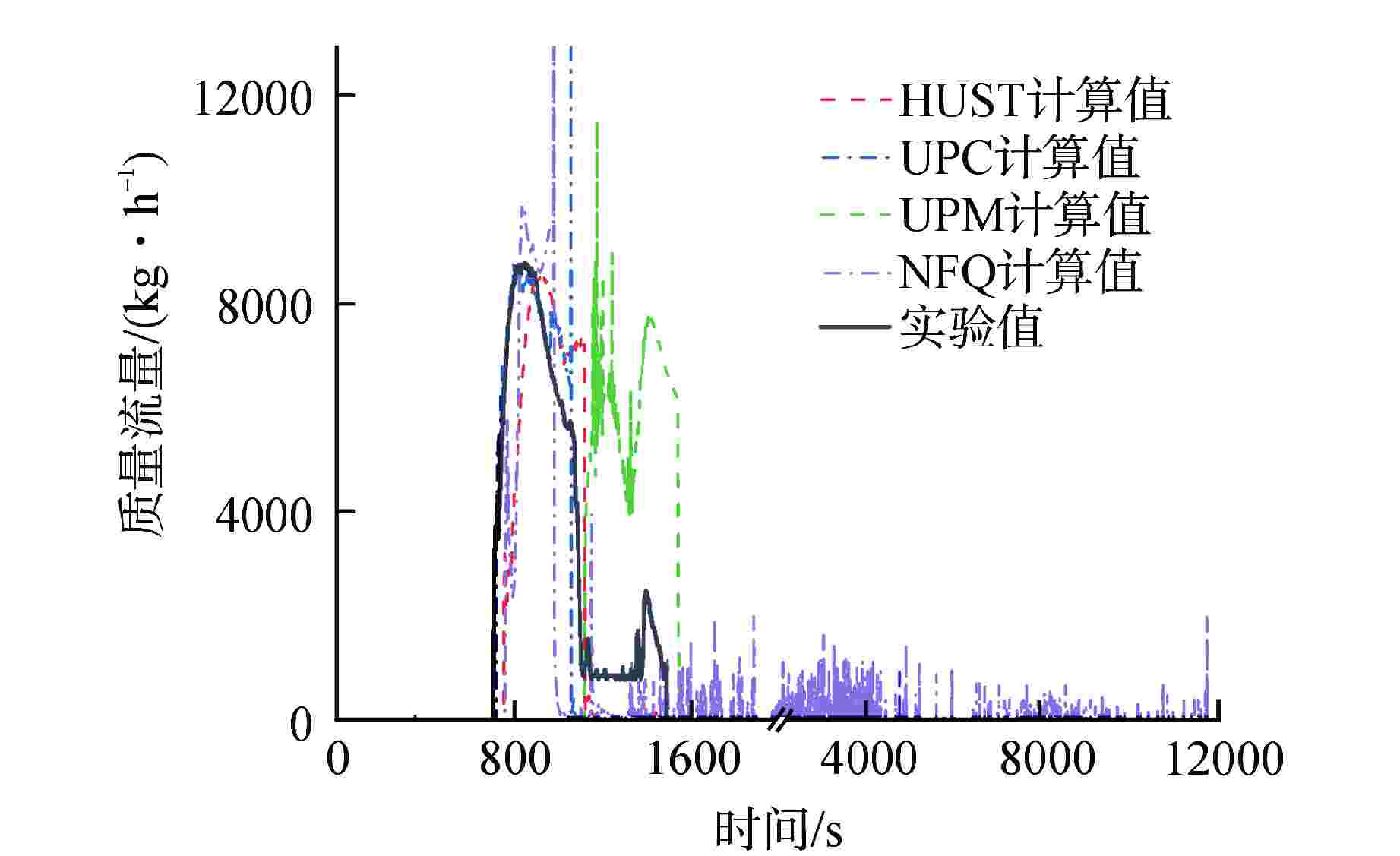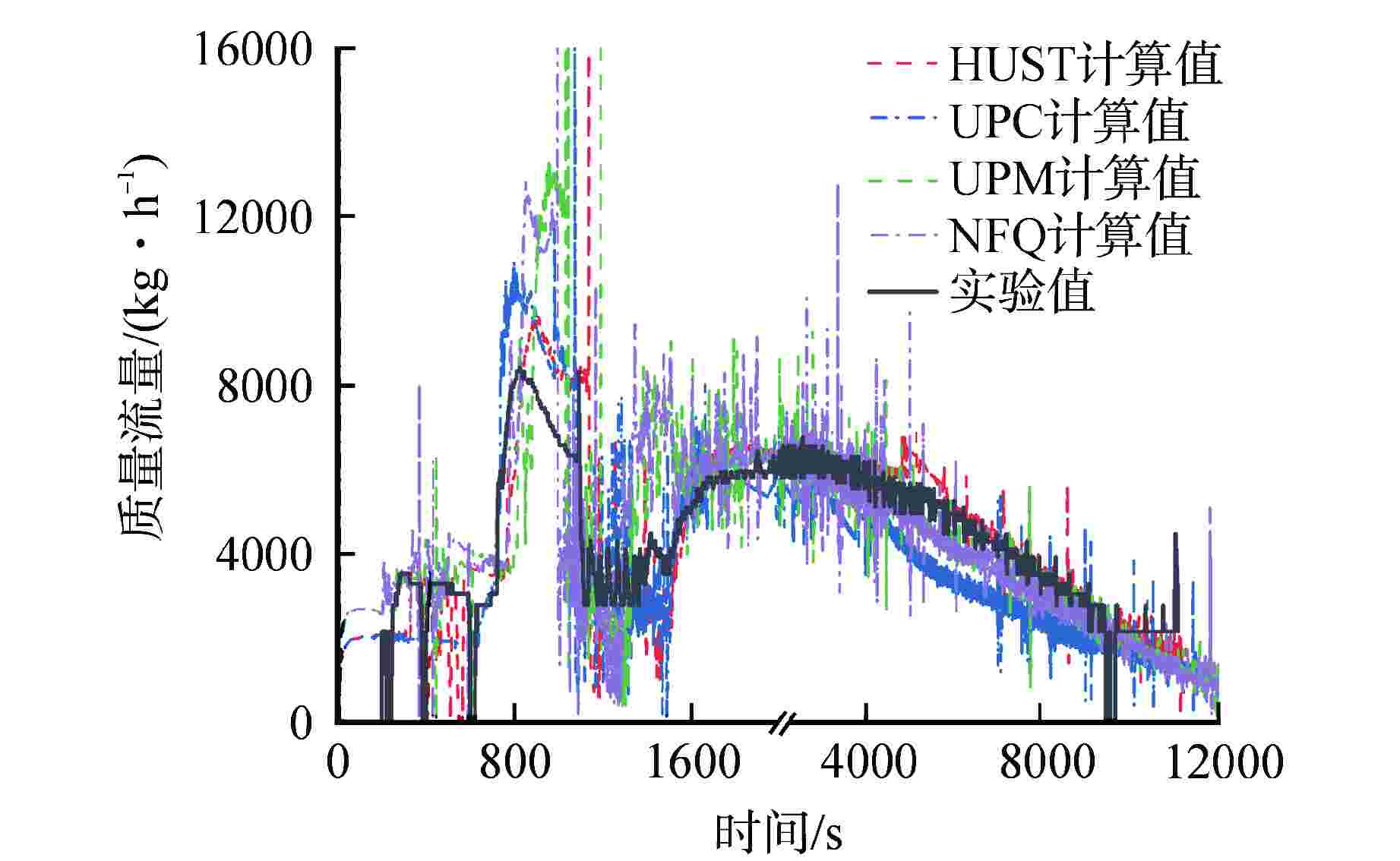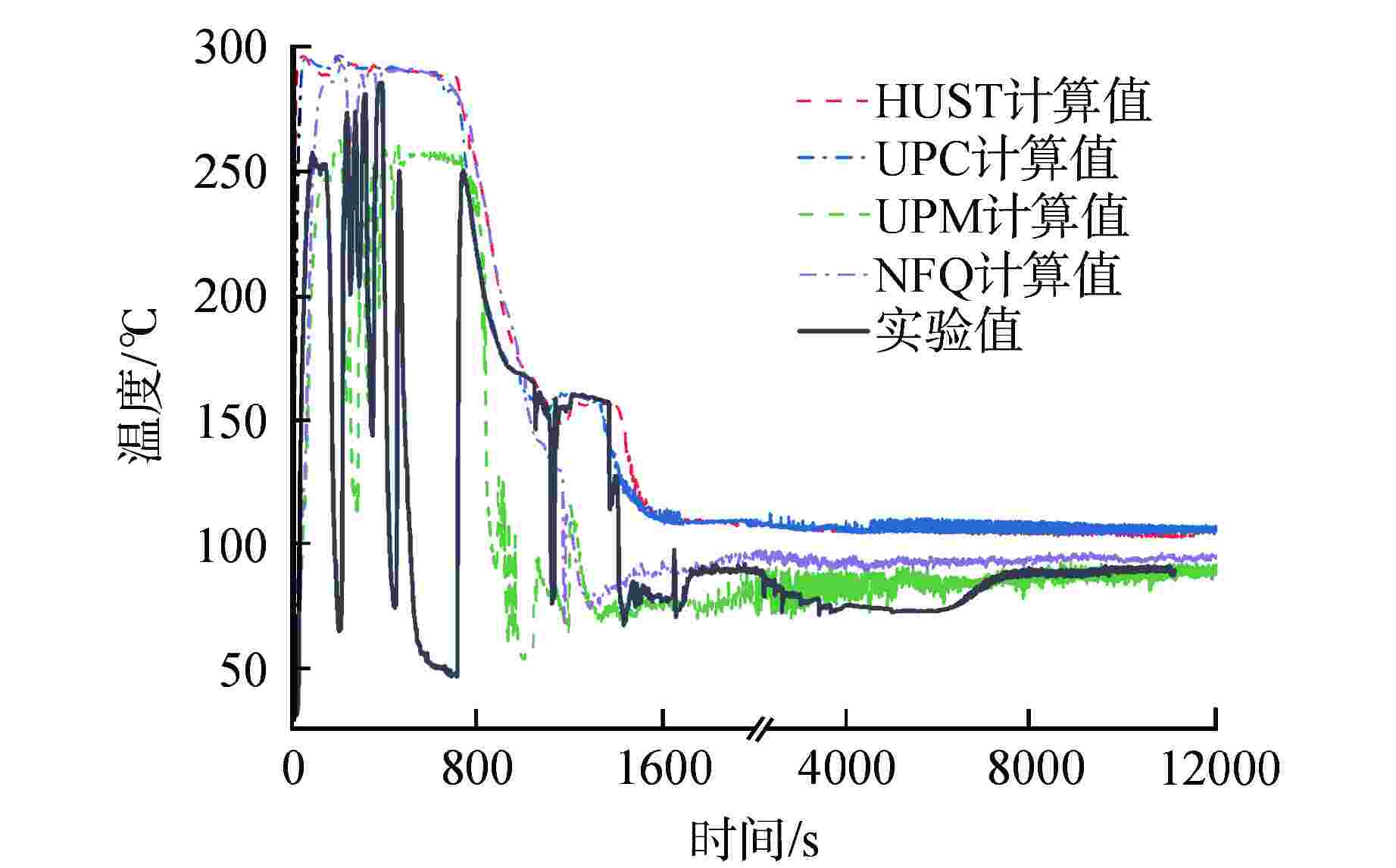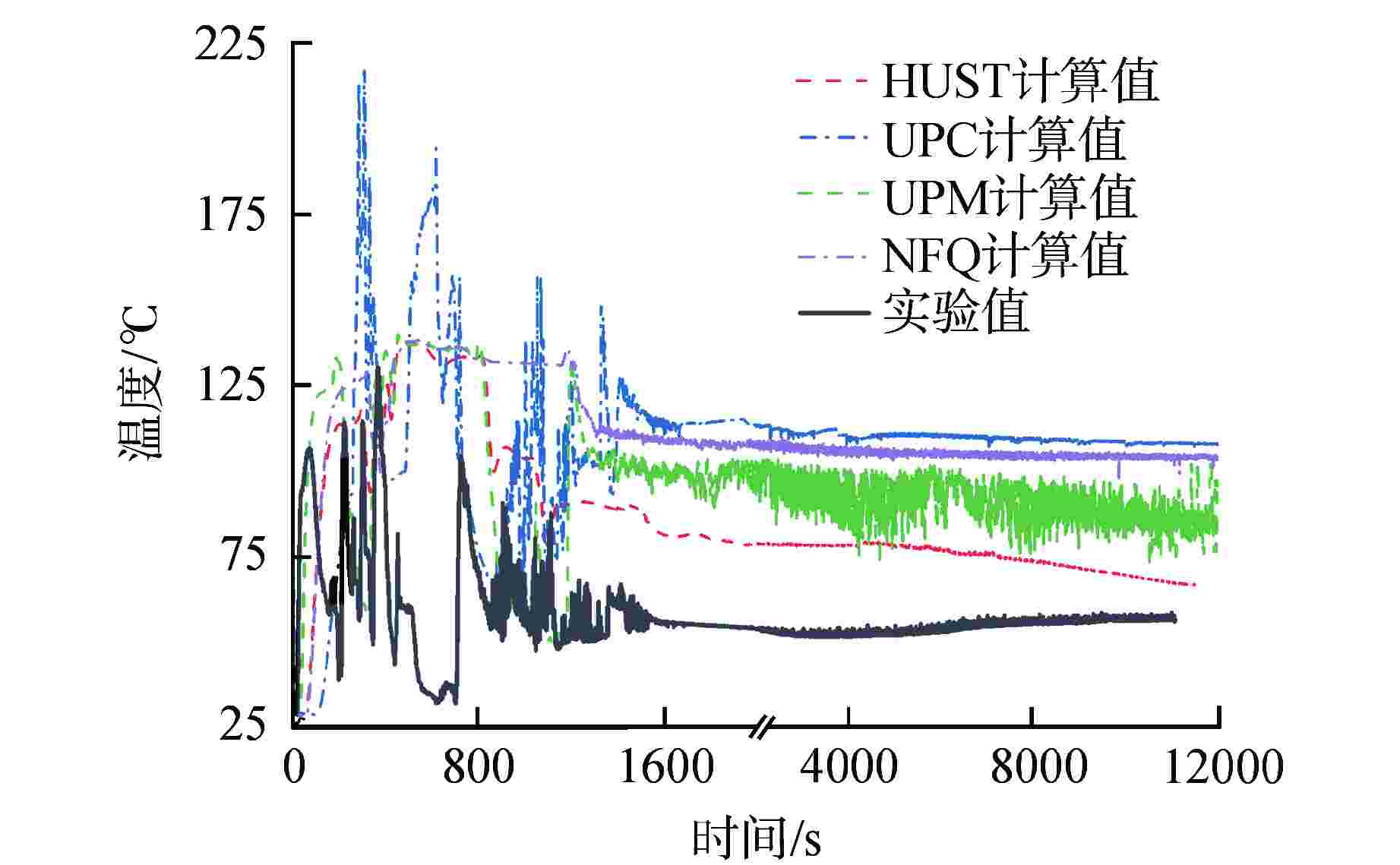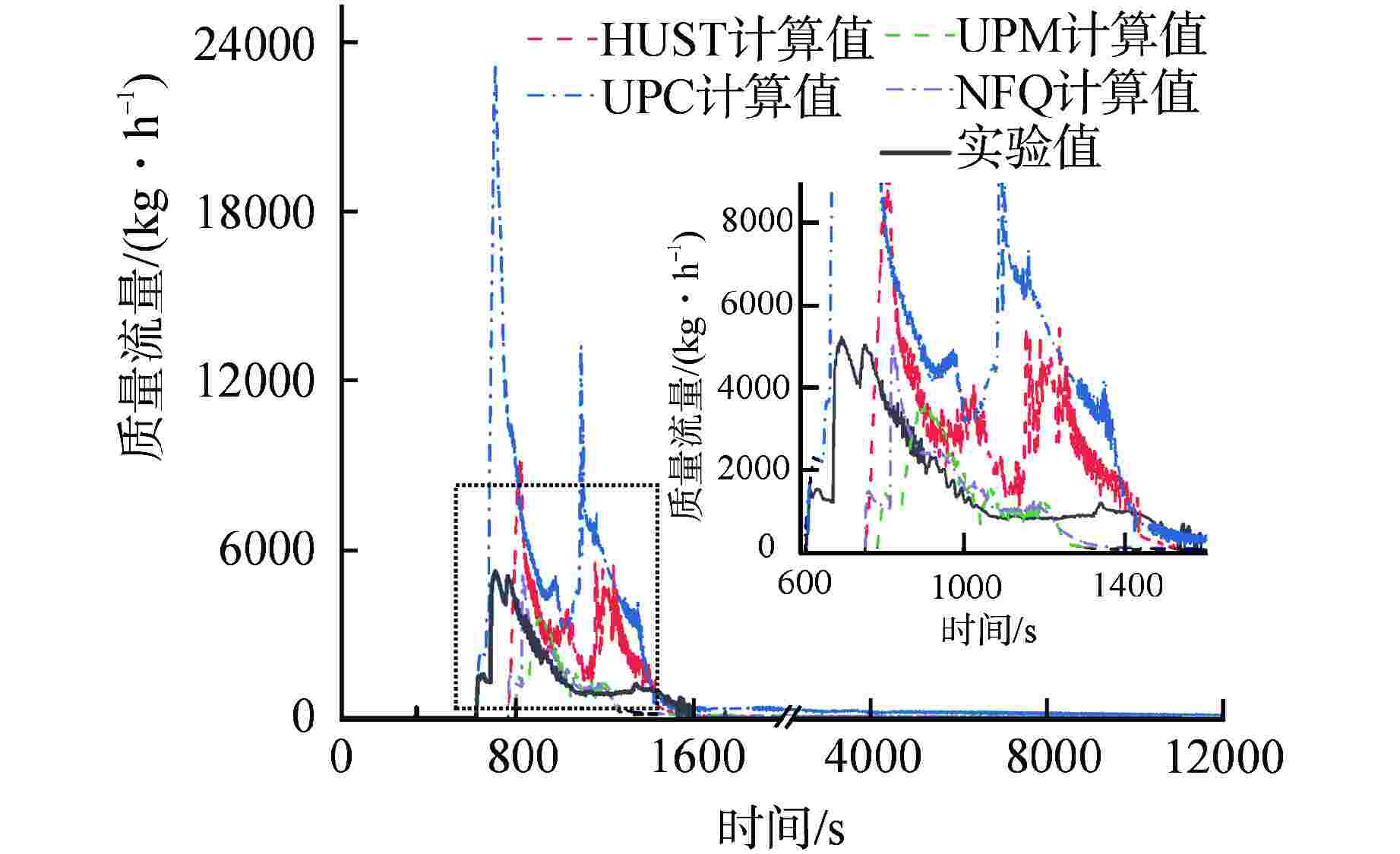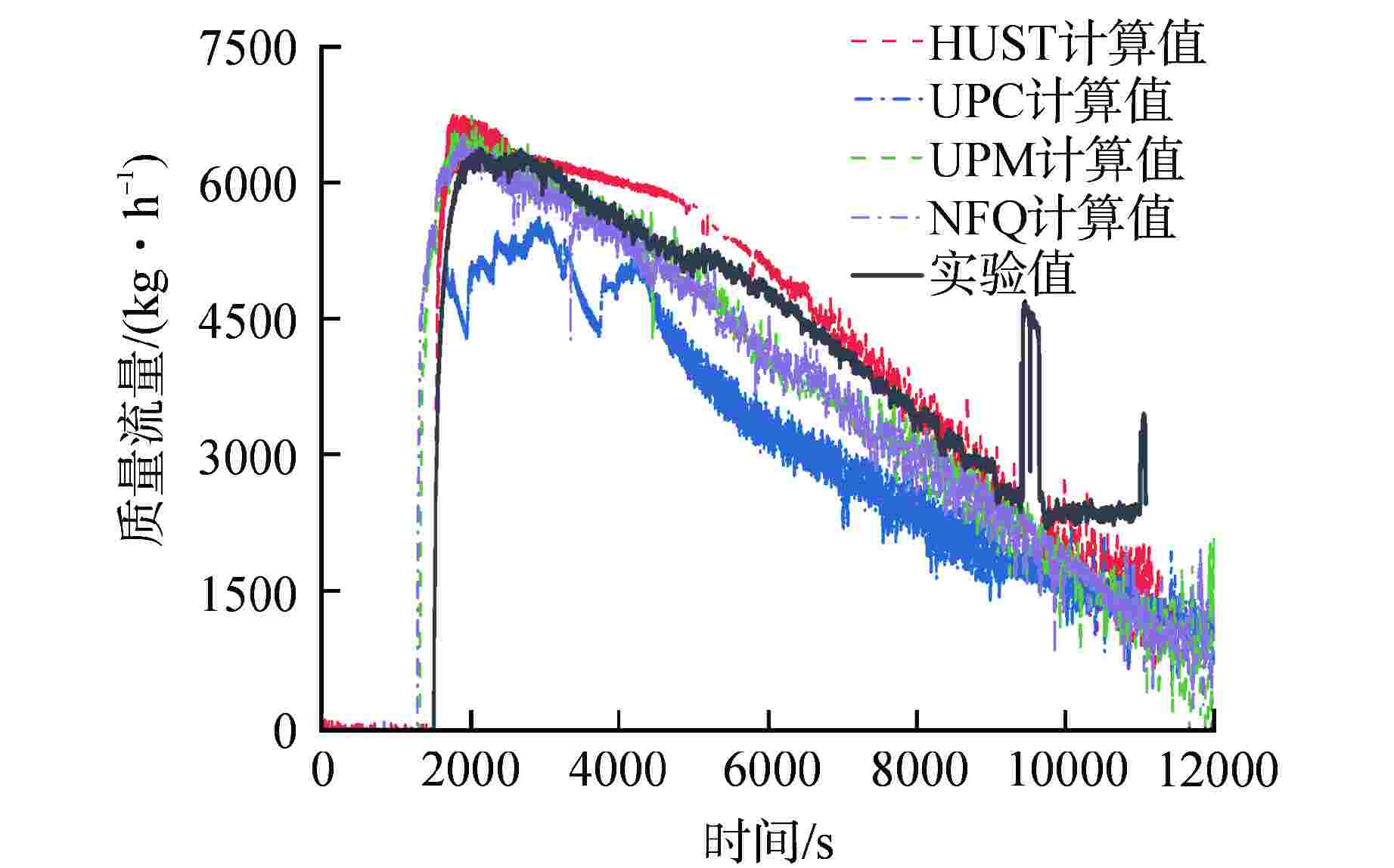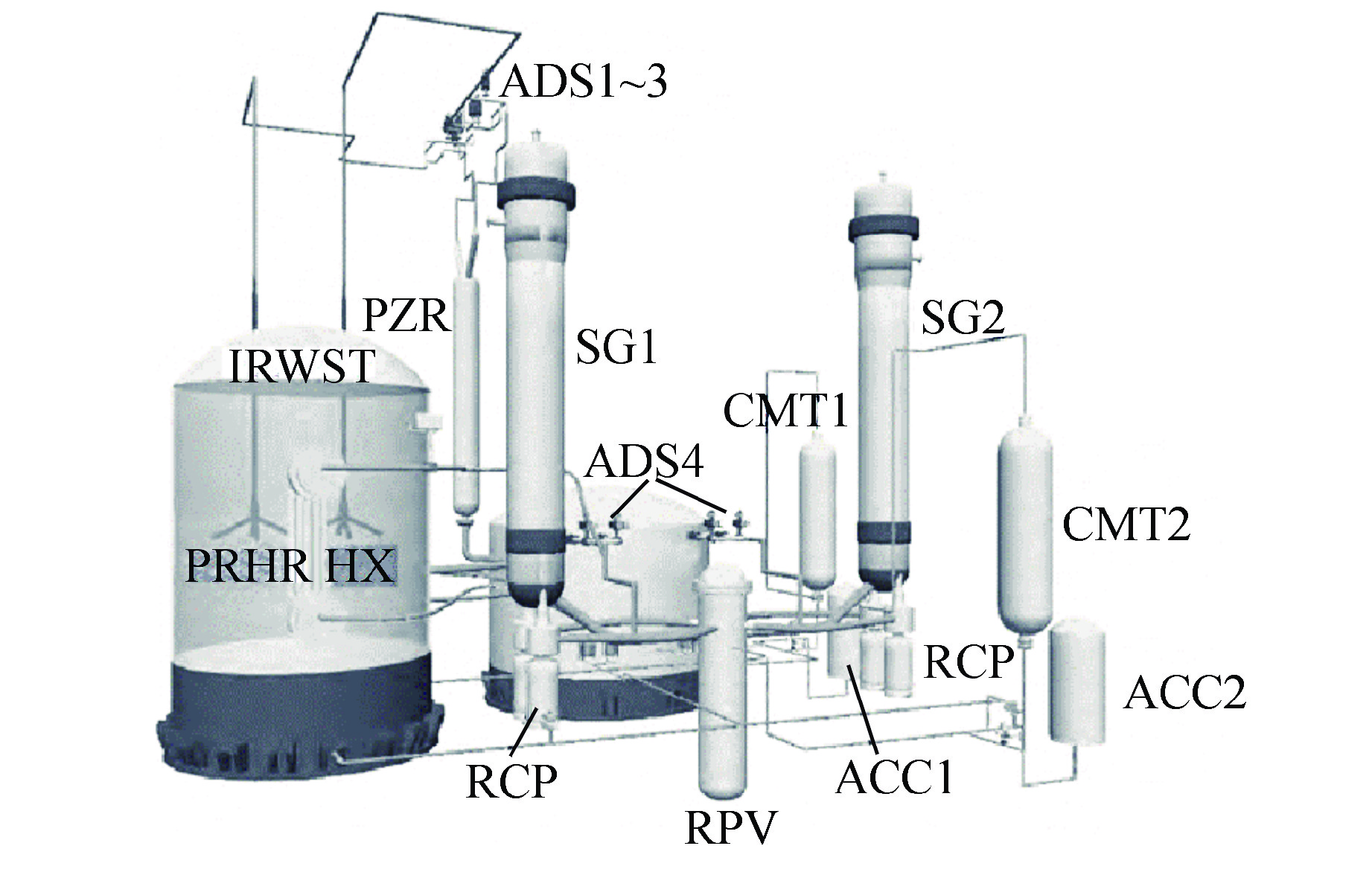Stage Progress and Analysis of International Standard Problem 51 “Open Test”
-
摘要: 为验证热工水力程序对失水事故条件下非能动核反应堆行为的模拟能力,并评估最佳估算程序预测特定实验的能力,基于我国大型整体效应试验台架——先进堆芯冷却系统机理实验(ACME)台架,经济合作与发展组织核能署组织开展了国际标准题51号(ISP-51)项目。针对目前公开测试阶段已提交的程序计算结果,进行初步对比分析,结果表明,对于同一冷管段2英寸小破口失水事故,华中科技大学、西班牙加泰罗尼亚理工大学使用的热工水力最佳估算程序RELAP5,其模拟结果在非能动安全系统触发时间、流量值等方面与实验值较为吻合。而马德里理工大学、西班牙NFQ公司使用的TRACE程序,在其模拟结果中,各非能动安全系统触发时间均有延迟,ADS1~3气液流量明显高于实验值,可能与不同临界流模型的选取及阀门管线设置方式相关。该项目开创了由经济合作与发展组织非成员国发起和负责国际标准题项目的先例,有助于我国相关科研团队进一步熟悉国际核科技研究合作项目的运作及组织管理,在国际核能科技合作中承担更多工作。Abstract: In order to verify the ability of the thermal-hydraulic code to simulate the behavior of passive nuclear reactor under the condition of loss of coolant accident, and to assess the ability of optimal estimation codes to predict specific experiments, based on China's large-scale global effect test bench-Advanced Core Cooling System Mechanism Experiment (ACME) facility, the Organization for Economic Co-operation and Development/Nuclear Energy Agency (OECD/NEA) organized the International Standard Problem No. 51 (ISP-51) project. A preliminary comparative analysis is made on the code calculation results submitted at the current open test stage. The results show that for the loss of coolant accident with a 2-inch small break in the same cold pipe section, the simulation results of the thermal-hydraulic optimal estimation code RELAP5 used by Huazhong University of Science and Technology and Polytechnic University of Catalonia are in good agreement with the experimental data in terms of triggering time and flow value of the passive safety system. In the simulation results of TRACE code used by Polytechnic University of Madrid and Spanish NFQ Company, the triggering time of each passive safety system is delayed, and the gas-liquid flow rate of ADS1~3 is significantly higher than the experimental value, which may be related to the selection of different critical flow models and the setting of valves and pipelines. This project has set a precedent for non-member countries of OECD to initiate and take charge of international standard problem projects. It also helps relevant scientific research teams in China to become more familiar with the operation, organization and management of international nuclear science and technology research cooperation projects, and to undertake more work in international nuclear science and technology cooperation.
-
Key words:
- International standard problem /
- ACME facility /
- Passive safety /
- Code validation
-
表 1 2000年后ISP热工水力项目简介
Table 1. Introduction to ISP Thermal-Hydraulic Projects after 2000
序号 时间 实验工况 测试数 主要内容 负责单位 验证程序 ISP-47 2007年 TOSQA、MISTRA、THAI 5 集总参数和计算流体力学(CFD)在安全壳热工水力领域应用 GRS①、Becker Tech②、IRSN③、CEA④、NRG⑤ GOTHIC、MELCOR、TONUS、ASTEC、COCOSYS、Star-CD、GASFLOW II、FUMO、DEFINE、CFX、CONTAIN、KUPOL-M、KUPOL-3D ISP-50 2012年 ATLAS SB-DVI-09 2 直接注入(DVI)管线小破口失水事故(SBLOCA) KAERI⑥ TRACE、CATHARE、RELAP5/MOD3、ATHLET、MARS-KS、KORSAR、TECH-M-97、APROS ISP-51 2020年 ACME SBLOCA & DE DVI 2 冷管段SBLOCA;DVI管线双端剪切断裂 华中科技大学 RELAP5/MOD 3.3、 TRACE、 ATHLET 等 注:①德国,德国联邦反应堆安全研究所;②德国,贝克尔技术有限公司;③法国,核安全与辐射防护研究院;④法国,原子能和替代能源委员会;⑤荷兰,核研究与咨询集团;⑥韩国,韩国原子能研究所 表 2 项目组织及参与机构
Table 2. Project Organization and Participating Institutions
国家及机构 组织 中国 华中科技大学(HUST)(项目负责单位) 国电投集团科学技术研究院有限公司(SPICRI)
(共同负责单位)生态环境部核与辐射安全中心(NSC) 中国广核集团有限公司(CGNPC) 中国原子能科学研究院(CIAE) 中国核动力研究设计院(NPIC) 清华大学(THU) 上海交通大学(SJTU) 西安交通大学(XJTU) 重庆大学(CQU) 哈尔滨工程大学(HEU) 华北电力大学(NCEPU) 捷克共和国 捷克核研究所(UJVRez) 德国 德国联邦反应堆安全研究所(GRS) 匈牙利 匈牙利科学院能源研究中心(MTA EK) 意大利 意大利核工业工程(NINE) 比萨大学(UNIPI) 韩国 韩国原子能研究所(KAERI)(共同负责单位) 西班牙 马德里理工大学(UPM) 西班牙核安全理事会(CSN) NFQ公司 加泰罗尼亚理工大学(UPC) 美国 美国核管理委员会(NRC) 弗吉尼亚联邦大学(VCU) 国际组织 经合组织核能署(OECD/NEA)(组织协调) 表 3 ACME主要比例因子
Table 3. Main Scaling Ratios of ACME
参数 参数值 $l_{_{\rm{R}}} $ 1∶3 $d_{_{\rm{R}}} $ 1∶5.6 流通面积比$a_{_{\rm{R}}} $① 1∶31.36 体积比$V_{_{\rm{R}}} $② 1∶94 $v_{_{\rm{R}}} $ 1∶1.732 $\tau_{_{\rm{R}}} $ 1∶1.732 质量流量比${\dot{m} }_{_{\rm{R}}}$③ 1∶54.32 注:①${a_{_{\text{R} } } } = d_{_{\text{R} } }^{^2}$;②${V_{_{\text{R}}}} = {a_{_{\text{R}}}}{l_{_{\text{R}}}} $;③${\dot{m} }_{_{\rm{R} } } = {a_{_{\rm{R}}} }l_{_{\text{R} } }^{^{1/2} }$ 表 4 程序节点划分
Table 4. Code Node Partition
组件 数量 UPC (R) UPM (T) NFQ (T) HUST (R) 管道 80 123 123 80 环管 10 10 ACC 2 2 泵 4 4 4 4 阀门 36 36 36 36 分离器 2 0 2 2 破口/填充 (TRACE) 或
控制体 (RELAP5)21 13/6 16/6 21 单一接管 1264 64 64 50 时间相关接管 6 控制系统 761 529 585 896 热构件和材料 52 62 70 52 功率组件 (TRACE) 2 2 R—RELAP5;T—TRACE 表 5 初始及边界条件对比
Table 5. Comparison of Initial and Boundary Conditions
参数 实验结果 计算结果 UPC UPM NFQ HUST 堆芯初始功率/MW 3.64 3.64 3.64 3.64 3.64 加热棒衰变功率曲线 ANS71曲线 ANS71曲线 ANS71曲线 ANS71曲线 ANS71曲线 PZR压力/MPa 9.10* 9.19 9.20 9.20 9.20 ACC1 压力/MPa 4.81* 4.91 4.81 4.81 4.93 ACC2 压力/MPa 4.86* 4.96 4.86 4.86 4.93 HL1温度/℃ 295.1 295.8 294.85 295.48 299.4 HL2温度/℃ 294.8 295.8 294.85 295.48 299.70 CL1温度/℃ 286.6 289.8 286.70 287.31 289.05 CL2温度/℃ 290.4 289.8 289.42 289.75 289.21 CL3温度/℃ 286.2 287.8 286.70 287.31 289.24 CL4温度/℃ 289.1 287.8 289.42 289.75 289.21 CL1质量流量/(kg·h−1) 85054 82440 84600 86040.86 84342.72 CL2质量流量/(kg·h−1) 85883 82440 83880 85499.49 84162.67 CL3质量流量/(kg·h−1) 86636 83160 84600 85592.46 84893.50 CL4质量流量/(kg·h−1) 86576 83160 83880 85541.34 84897.06 PZR坍缩液位/m 2.3 2.30 2.2 2.20 2.12 SG1二次侧出口压力/MPa 6.83* 6.93 6.83 6.88 6.02 SG2二次侧出口压力/MPa 7.17* 7.25 7.17 7.20 5.88 SG1二次侧液位/m 3.64 3.64 3.60 3.60 2.83 SG2二次侧液位/m 3.70 3.70 3.60 3.59 2.81 *压力为测量压力,即表压,与绝对压力相差约0.1 MPa 表 6 ISP-51公开测试事件序列 s
Table 6. Sequence of Events of ISP-51 Open Test
事件序列 实验 计算 UPC UPM NFQ HUST 事故起始 0 0.02 0 0 0 S信号& R信号 0 0.02 0 0 0 破口阀门开启 4 0.02 0 0 0 SG1蒸汽关闭 0 0.065 0 0 0 SG2蒸汽关闭 1 0.065 0 0 0 主给水泵关闭 0 0.065 0 0 0 CMT 1安全阀打开 1 0.155 0 0 0 CMT 2安全阀打开 2 0.155 0 0 0 PRHR 隔离阀打开 3 0.065 0 0 0 主泵1、2、3、4惰转 160 160 160 160.00 160 ADS1A 打开 613 629 726 760.50 697 ADS1B 打开 613 629 726 760.50 697 ADS2A 打开 675 692 788 821.01 760 ADS2B 打开 676 692 788 821.01 760 ACC 1安注阀打开 717 749 766 ACC 2安注阀打开 717 749 766 ADS3A 打开 746 761 858 892.01 829 ADS3B 打开 746 761 858 892.01 829 IRWST 1安注阀打开 1361 1349 1327 1160.04 1127 IRWST 2安注阀打开 1361 1349 1327 1160.04 1127 ADS4-1A 打开 失效 失效 失效 失效 失效 ADS4-2A 打开 1361 1338 1209 1160.04 1433 ADS4-1B 打开 1396 1373 1243 1194.01 1399 ADS4-2B 打开 1396 1373 1243 1194.01 1433 ACC1 开始注入 720 750 811 773.53 766 ACC2 开始注入 720 750 811 773.53 766 IRWST开始通过DVI 1注入 1506 1444 1327 1287.09 1511 IRWST开始通过DVI 2注入 1504 1460 1327 1287.09 1511 ACC1 排空 1118 1110 1300 1426.29 1133 ACC2 排空 1121 1110 1309 1426.29 1133 CMT1 排空 5812 5014 1541 1511.44 5832 CMT2 排空 4591 4725 1527 1511.44 4898 全高IRWST至主地坑止回阀1-1打开 9522 9872 10266 9966 全高IRWST至主地坑止回阀1-2打开 9207 9872 10266 9966 全高IRWST至主地坑止回停止 9637 10040 12013 10340 主地坑开始通过DVI 1注入 9654 12013 主地坑开始通过DVI 2注入 9654 12013 计算结束 11000 20000 12000 12000 12000 -
[1] KARWAT H. CSNI: International Standard Problems (ISP), brief descriptions (1975−1999): NEA/CSNI/R(2000)5[R]. Paris: NEA/CSNI, 2000. [2] FIRNHABER M, FISCHER K, SCHWARZ S, et al. International standard problem ISP44 (KAEVER): experiments on the behavior of core-melt aerosols in a LWR containment-comparison report: NEA/CSNI/R(2003)5[R]. Paris: NEA/CSNI, 2002. [3] HERING W, HOMANN C, LAMY J S, et al. Comparison and interpretation report of the OECD international standard problem No. 45 exercise (QUENCH-06 experiment): NEA/CSNI/R(2002)23[R]. Paris: NEA/CSNI, 2002. [4] CLÉMENT B, HASTE T. Comparison report on international standard problem ISP-46 (PHEBUS FPT1): NT SEMAR 03/021 Revision 3[R]. Paris: IRSN, 2003. [5] ALLELEIN H J, FISCHER K, VENDEL J, et al. International standard problem ISP-47 on containment thermal-hydraulics final report: NEA/CSNI/R(2007)10[R]. Paris: NEA/CSNI, 2007. [6] DOUGHTY G, SHEPHERD D, PRINJA N, et al. International standard problem No. 48-containment capacity. Synthesis report: NEA/CSNI/R(2005)5[R]. Paris: NEA/CSNI, 2005. [7] HESSHEIMER M. International standard problem No. 48 analysis of a 1: 4-scale prestressed concrete containment vessel model under severe accident conditions: NEA/CSNI/R(2005)7[R]. Paris: NEA/CSNI, 2005. [8] KOTCHOURKO A, BENTAIB A, FISCHER K, et al. ISP-49 on hydrogen combustion: NEA/CSNI/R(2011)9[R]. Paris: NEA/CSNI, 2012. [9] KANG K H, MOON S K, PARK H S. ATLAS facility and instrumentation description report: KAERI/TR-3779/2009[R]. Seoul: KAERI, 2009. [10] CHOI K Y, BAEK W P, CHO S, et al. International standard problem No. 50 ATLAS test, SB-DVI-09: 50% (6-inch) break of DVI line of the APR1400-final integration report: NEA/CSNI/R(2012)6[R]. Paris: NEA/CSNI, 2012. [11] 苏罡. 中国核能科技“三步走”发展战略的思考[J]. 科技导报,2016, 34(15): 33-41. [12] ZUBER N, WILSON G E, ISHII M, et al. An integrated structure and scaling methodology for severe accident technical issue resolution: development of methodology[J]. Nuclear Engineering and Design, 1998, 186(1-2): 1-21. doi: 10.1016/S0029-5493(98)00215-5 [13] LI Y Q, HAO B T, ZHONG J, et al. Comparative experiments to assess the effects of accumulator nitrogen injection on passive core cooling during small break LOCA[J]. Nuclear Engineering and Technology, 2017, 49(1): 54-70. doi: 10.1016/j.net.2016.06.014 [14] LI Y Q, CHANG H J, YE Z S, et al. Analyses of ACME integral test results on CAP1400 small-break loss-of-coolant-accident transient[J]. Progress in Nuclear Energy, 2016, 88: 375-397. doi: 10.1016/j.pnucene.2016.01.012 [15] LI Y Q, YE Z S, ZHONG J, et al. Core makeup tank behavior investigation during ACME integral effect tests[J]. Nuclear Engineering and Design, 2020, 364: 110701. doi: 10.1016/j.nucengdes.2020.110701 [16] FANG F F, YANG F M, HAO B T, et al. Experimental and numerical analyses of typical SBLOCAs on advanced core-cooling mechanism experiment[J]. Atomic Energy Science and Technology, 2017, 51(8): 1393-1399. [17] 刘卓,常华健,阳祥,等. 非能动安全壳冷却系统空气流道自然循环的比例分析与设计[J]. 原子能科学技术,2016, 50(2): 254-260. doi: 10.7538/yzk.2016.50.02.0254 [18] 邓程程,常华健,秦本科,等. 比例试验台架中的储热分析[J]. 原子能科学技术,2013, 47(10): 1751-1759. doi: 10.7538/yzk.2013.47.10.1751 [19] 邓程程,常华健,秦本科,等. 非能动试验台架中CMT的比例分析及失真评价[J]. 原子能科学技术,2013, 47(11): 2026-2032. doi: 10.7538/yzk.2013.47.11.2026 [20] DENG C C, CHANG H J, QIN B K, et al. Stored energy analysis in the scaled-down test facilities[J]. Annals of Nuclear Energy, 2016, 96: 19-25. doi: 10.1016/j.anucene.2016.05.018 [21] ZHU S. Study on code modeling and test initialization condition method of ACME facility[J]. Atomic Energy Science and Technology, 2016, 50(7): 1179-1185. [22] USNRC. TRACE V5.0 theory manual field equations, solution methods, and physical models: NUREG/CR-5535/Rev P3-Vol I[R]. Washington, D.C: USNRC, 2010. -





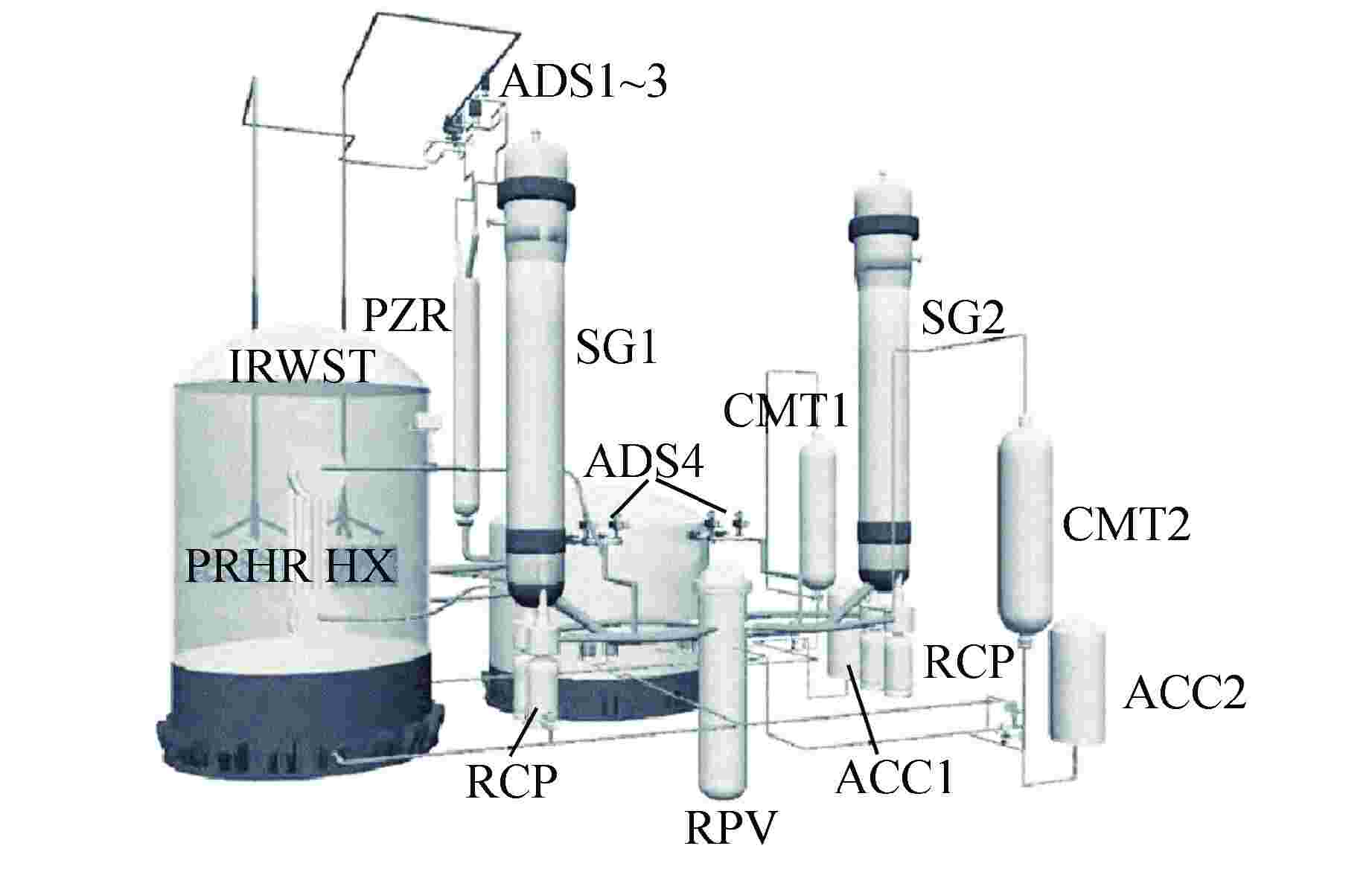
 下载:
下载:
